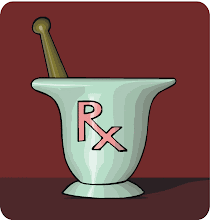Cosmetic surgery is a very popular form of plastic surgery. In 2006, nearly 11 million cosmetic plastic surgeries were performed in the United States alone.
Within the U.S,. it is legal for any doctor, regardless of speciality, to perform cosmetic surgery. It is thus important to distinguish the terms "plastic surgery" and "cosmetic surgery": Plastic Surgery is recognized by the
American Board of Medical Specialties as the subspecialty dedicated to the surgical repair of defects of form or function -- this includes cosmetic (or aesthetic) surgery, as well as reconstructive surgery. The term "cosmetic surgery" however, refers to surgery that is designed to improve cosmetics, or appearance. In several countries including Australia, many doctors who are not qualified as surgeons also perform cosmetic procedures.
The most prevalent aesthetic/cosmetic procedures are listed below. Most of these types of surgery are more commonly known by their "common names." These are also listed when pertinent.
Abdominoplasty (or "tummy tuck"): reshaping and firming of the abdomen
Blepharoplasty (or "eyelid surgery"): Reshaping of the eyelids or the application of permanent eyeliner, including
Asian blepharoplastyMammoplastyBreast augmentation (or "breast enlargement" or "boob job"): Augmentation of the
breasts. This can involve either saline or silicone gel prosthetics.
Breast reduction: Removal of skin and glandular tissue. Indicated to reduce back and shoulder pain or for psychological benefit in women with
macromastia.
Buttock Augmentation (or "butt augmentation" or "butt implants"): Enhancement of the
buttocks. This procedure can be performed by using silicone implants or fat grafting and transfer from other areas of the body.
Chemical peel: Minimizing the appearance of
acne,
pock, and other scars as well as
wrinkles (depending on concentration and type of agent used, except for deep furrows),
solar lentigines (age spots, freckles), and
photodamage in general. Chemical peels commonly involve
carbolic acid (Phenol),
trichloroacetic acid (TCA),
glycolic acid (AHA), or
salicylic acid (BHA) as the active agent.
Mastopexy (or "breast lift"): Raising or reshaping of breasts. Involves removal of breast skin as opposed to glandular tissue.
Labiaplasty: Surgical reduction and reshaping of the
labiaRhinoplasty (or "nose job"): Reshaping of the
noseOtoplasty (or ear surgery): Reshaping of the
earRhytidectomy (or "face lift"): Removal of wrinkles and signs of aging from the face
Suction-Assisted Lipectomy (or liposuction): Removal of fat from the body
Chin augmentation: Augmentation of the
chin with an implant (e.g. silicone) or by
sliding genioplasty of the jawbone.
Cheek augmentationCollagen,
fat, and other tissue filler injections (eg
hyaluronic acid)
Laser skin resurfacing
Injection of dermal fillers (
collagen,
hyaluronic acid,
fat, and others)
In recent years, a growing number of patients seeking cosmetic surgery have visited other countries to find doctors with lower costs. These
medical tourists get their procedures done for up 50 percent or more cost savings in countries including Cuba, Thailand, Argentina, India, and some areas of eastern Europe. The risk of complications and the lack of after surgery support are often overlooked by those simply looking for the cheapest option




